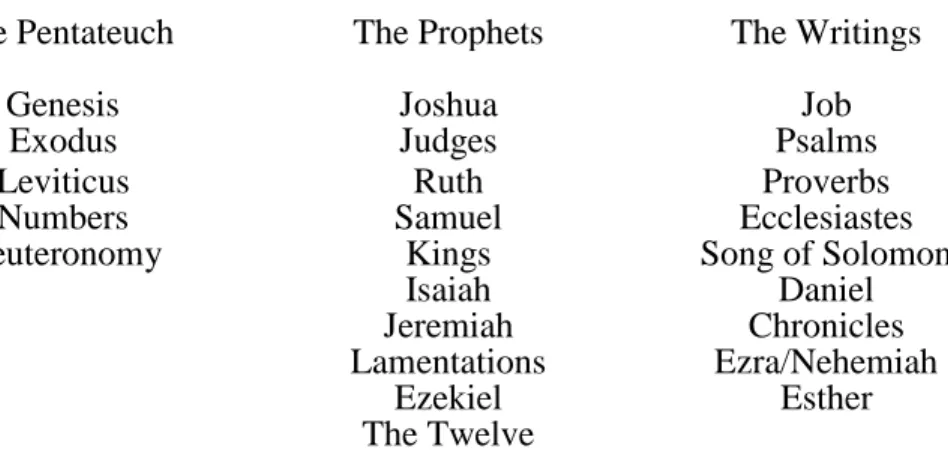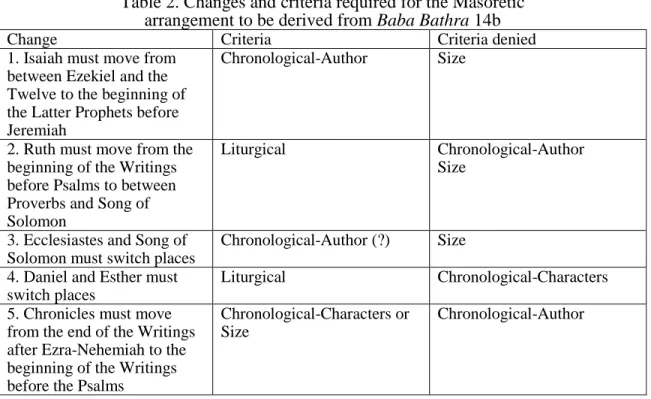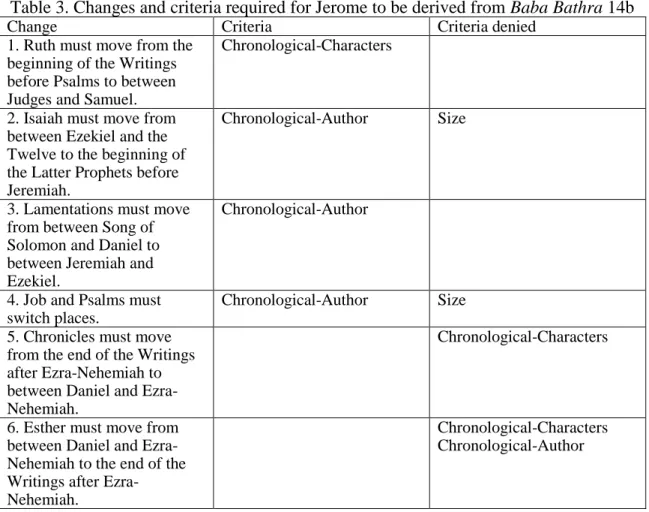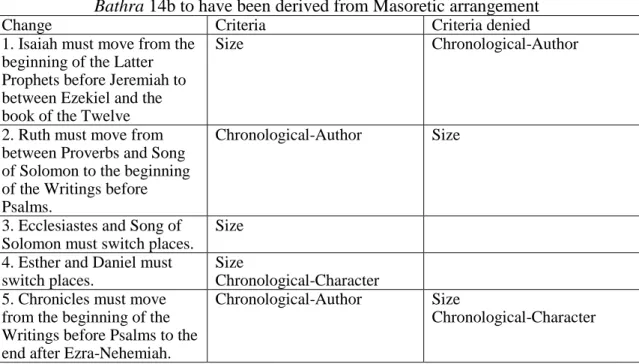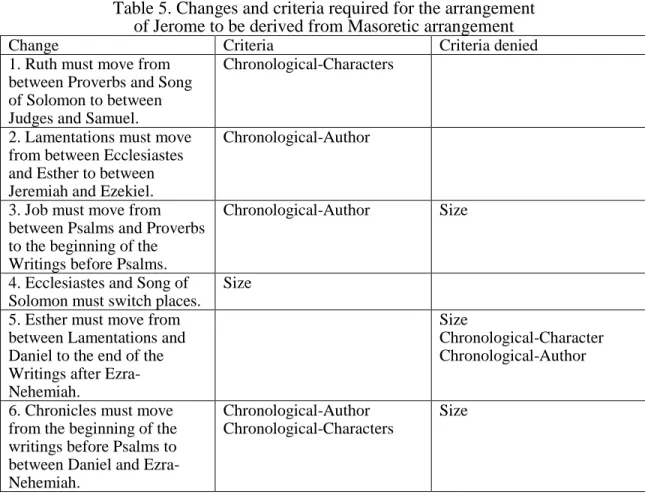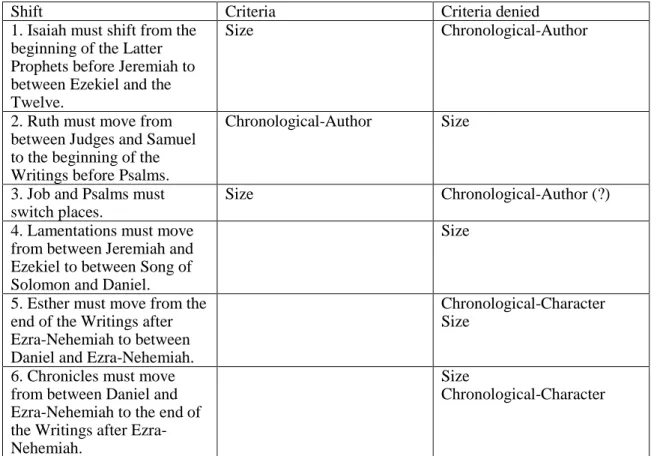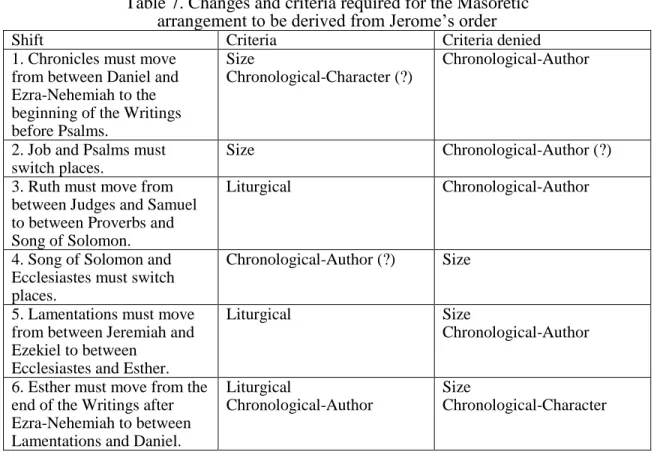AOTC Apollos Old Testament Commentary ASBT Acadia Studies in Bible and Theology BBB Bonner Biblische Beiträge. DOTHB Dictionary of the Old Testament: Historical Books DOTP Dictionary of the Old Testament: Pentateuch. JESOT Journal of the Evangelical Study of the Old Testament JET Jahrbuch für evangelikale Theologie.
JSOTSup Journal for the Study of the Old Testament Supplement Series KAT Kommentar zum Alten Testament. NICOT New International Commentary on the Old Testament NIGTC New International Greek Testament Commentary NSBT New Studies in Biblical Theology. Michele watched our children just for the joy of helping a fellow member of the body of Christ while I finished Chapter 1 of this dissertation.
I miss him so much, but I also think of him with joy for leading his family in the ways of the Lord. Their love and support for me is just one example of the many ways they have tried to be faithful to our mutual Lord and Savior, Jesus Christ.
INTRODUCTION
Interest in the arrangement of the Old Testament canon expanded under the influence of Brevard Childs. Wouldn't the presence of multiple arrangements of Old Testament books indicate that. There are three possibilities as to how several arrangements of the books of the Old Testament could have taken place in the meantime.
Beckwith, The Old Testament Canon of the New Testament Church and its Background in Early Judaism (London: SPCK, 1985). In my judgment, the same argument does not work when considering the arrangement of the books of the Old Testament. Testament suggests multiple arrangements of the books of the Old Testament, so summary critics cannot prioritize a single arrangement.
I contend that the composition of the biblical text requires that compositional criticism examine multiple arrangements of the Old Testament. This thesis will therefore not use his arrangement of the Old Testament, even though it is old. These three arrangements are the oldest witnesses regarding the arrangement of the entire Old Testament.
Collecting the Old Testament does not completely disassociate the integrity of its books.
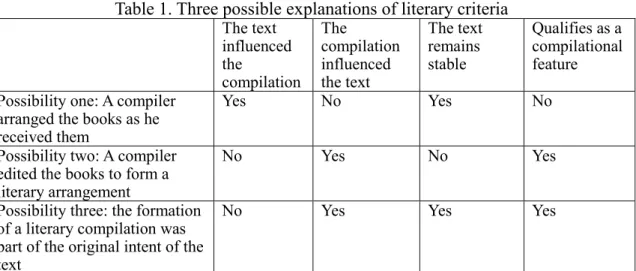
Catchwords
In addition to the Psalter, the Book of Twelve has also been suggested as a deliberate collection of individual books. Studies of intra-biblical interpretation are also relevant because compilation criticism could be considered a subset of this field. Compilation criticism merely extends this approach to argue that the textual relationship suggests reading these texts within a particular arrangement.
Nogalski's keyword analysis for the book with the twelve catchphrases at the end of the first book. What is important is that Nogalski and even his opponents recognize that the presence of cues would indicate that. Even Ben Zvi begins his critique of Nogalski by saying, "It seems that cues connecting subsequent books are perhaps the most useful feature that can indicate conscious editorial processes."8 If the presence of cues would be sufficient as evidence that the compilation of the book by the Twelve influenced the composition of the books in it, then the presence of cues could also indicate the same kind of activity within the Old Testament canon.9.
Before proceeding to discuss other criteria, it should be recognized that some of these criteria will be more useful for distinguishing certain types of compilations than others. While the thematic connections (discussed below) between the books may be more subjective, the appearance of key words and phrases would indicate a specific attempt to sequence the material in question. Words and phrases are less useful for identifying an intentional collection of books or the intentional placement of a book in a collection.
If catchwords and catchphrases do not extend throughout the collection, as Nogalski argues for the book of the Twelve above, these occurrences would not be able to identify these collections. For example, even if catch words and catch phrases can demonstrate that A and B were intended to be read sequentially and C and D were intended to be read sequentially, with no connection between B and C or D and A,. As to the necessity for these words to appear "at the beginning or end of adjacent books," see below.
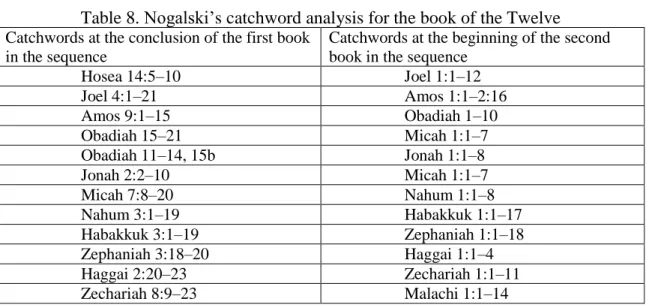
Framing Devices
This psalm begins by exalting YHWH as the refuge of the psalmist (Ps 144:1–3) and ends by declaring how blessed are the people whose God is YHWH (Ps 144:15). According to Wilson, these verses constitute the outer framework or inclusio that encompasses the entire psalter.19 Derek E. Wittman has argued that Psalms 2 and 149 form an inclusio around the Psalter through their portrayal of God as a royal figure and through their portrayal of pleasing foreign nations.20 Again, for the purposes of this chapter, the validity of any of these claims is irrelevant.
It is important that all these authors recognize that framing devices can be used as a compilation tool. Since this is true of the composition of the Book of the Twelve and the Psalter, framing tools would also suggest the deliberate composition of the entire Old Testament. Wilson, "Shaping the Psalter: A Consideration of Editorial Linkage in the Book of Psalms," in The Shape and Shaping of the Psalter, ed.
Wittman, "Let Us Cast Their Ropes From Us: The Editorial Significance of the Portrayal of Foreign Nations in Psalms 2 and 149," in The Shape and Shaping of the Book of Psalms: The Current State of Scholarship, ed. By its very nature, an inclusio will clearly illustrate a deliberate collection and a deliberate placement of the first and last book in that collection. Since this feature only concerns the first and last book in a collection, an inclusio cannot be used to indicate intentional coherent sequencing.
Superscriptions
What is key to this study is that Watts recognizes the constitutive nature of headlines. Gerald Wilson, among others, has noted that the headings of the Psalms often form collections based on authorship.23 In addition to the Davidic collection noted in Psalms 3–41 above, the headings identify additional Davidic collections from Psalms 51–65 and 68– 70. The presence of headings alone is insufficient to indicate an intentional placement of a book or to identify intentional continuous sequencing.
Thematic Continuation
The best example of an associative compilation feature based on thematic correspondence in the Old Testament is the Book of the Twelve, discussed above. These books are part of the Book of the Twelve, also known as the Minor Prophets. Thus, these manuscripts are generally less important for studying the arrangement of the Old Testament.
Nogalski, “The Editorial Shaping of Nahum 1 for the Book of the Twelve,” in Collected Essays of James D. This chapter examines the Book of Ruth and its compilation partners within the three arrangements of the Old Testament mentioned in chapter 2. will conclude that the most likely explanation of the text of these books is that the.
Baba Bathra 14b places Ruth at the beginning of the scriptures, before the book of Psalms. In this chapter, we will argue that the text of the Old Testament books was influenced by at least three and possibly four collections related to the book of Ruth. A single arrangement of the books of the Old Testament will not be able to contain all the collections which.
Thus, according to Steins, "Chronicles has a unique position in the canon of the Old Testament."33. For example, Steins argues that Chronicles was written long after the remaining books of the Old Testament (2nd century BC). Chronicles was compiled to be the final book of the Old Testament and it wasn't.
He discusses the authority of the Palestinian canon (which places Chronicles within the third division of the canon) over the Alexander canon (which places Chronicles within the second division of the canon). Second, Goswell engages with the evidence Steins gives for Chronicles being the last book of the Old Testament. As noted in chapter 3, such a claim would require a significantly developed understanding of the Old Testament canon.

